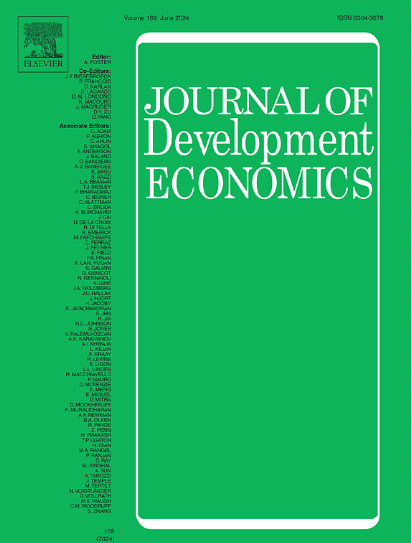The deeper roots of human capital formation and economic development in Southeast Asia, 1900–2000
IF 5.1
1区 经济学
Q1 ECONOMICS
引用次数: 0
Abstract
Since 1970, Southeast Asia’s per capita GDP grew seven-fold and headcount poverty rates declined from ca. 70 to 5%. This paper explores the 20th century schooling revolution as one of the deeper roots of this major leap in human prosperity. Using micro-data on the educational attainment and migration status of ca. 123 million individuals, subdivided across 277 provinces in eight Southeast Asian countries, we establish a strong and significant relationship between early educational attainment and sub-national economic development at the start of the 21st century. Using a wide range of historical and geographic controls, we find that higher education shares are more strongly associated with regional development outcomes than mass education. We also find a strong and robust contribution of inter-regional and international migration to human capital accumulation and long-term development.
人力资本形成与东南亚经济发展的深层根源,1900-2000
自1970年以来,东南亚的人均GDP增长了7倍,人口贫困率从约70%降至5%。本文探讨了20世纪的教育革命是人类繁荣的重大飞跃的深层根源之一。通过对8个东南亚国家277个省份约1.23亿人的受教育程度和移民状况的微观数据进行细分,我们在21世纪初建立了早期受教育程度与地方经济发展之间强有力的显著关系。利用广泛的历史和地理控制,我们发现高等教育份额与区域发展成果的关联比大众教育更强。我们还发现,区域间和国际移民对人力资本积累和长期发展有着强大而有力的贡献。
本文章由计算机程序翻译,如有差异,请以英文原文为准。
求助全文
约1分钟内获得全文
求助全文
来源期刊

Journal of Development Economics
ECONOMICS-
CiteScore
8.30
自引率
4.00%
发文量
126
审稿时长
72 days
期刊介绍:
The Journal of Development Economics publishes papers relating to all aspects of economic development - from immediate policy concerns to structural problems of underdevelopment. The emphasis is on quantitative or analytical work, which is relevant as well as intellectually stimulating.
 求助内容:
求助内容: 应助结果提醒方式:
应助结果提醒方式:


